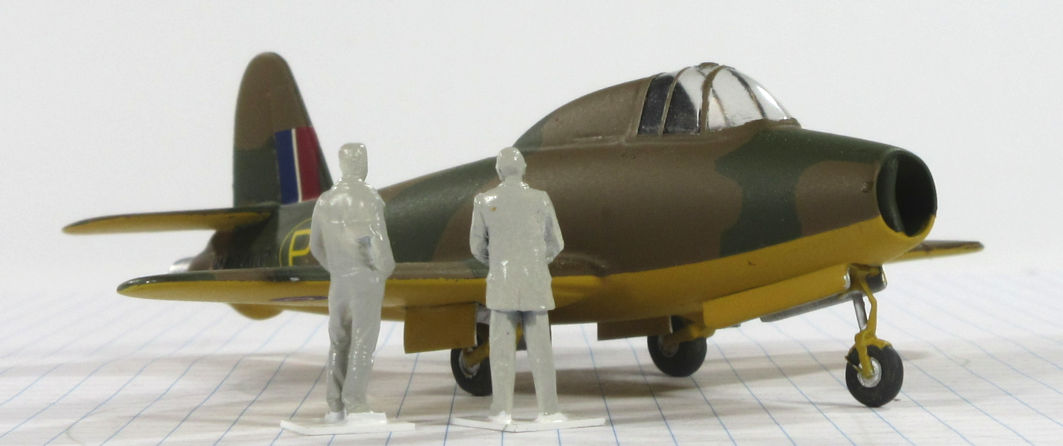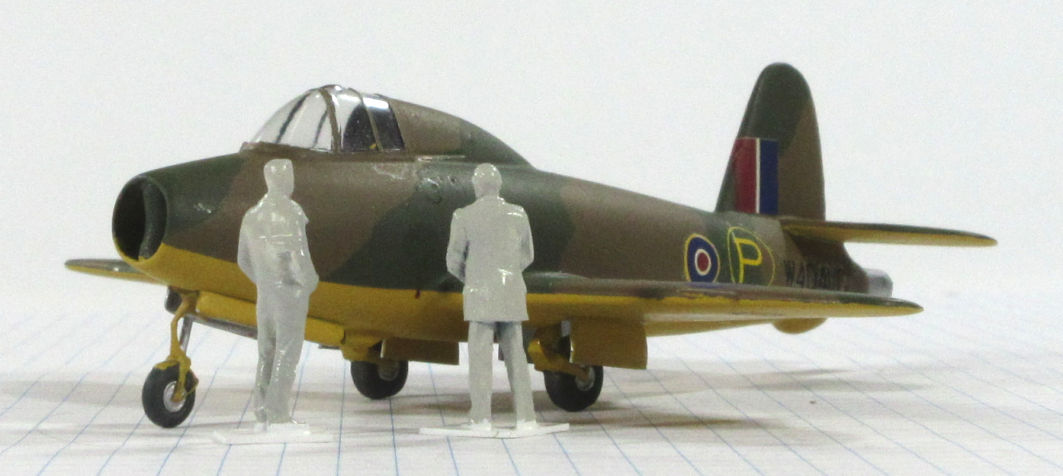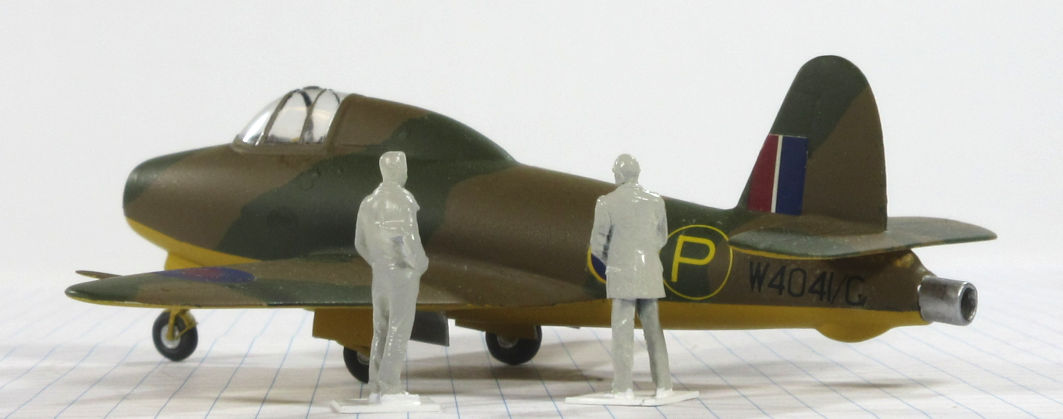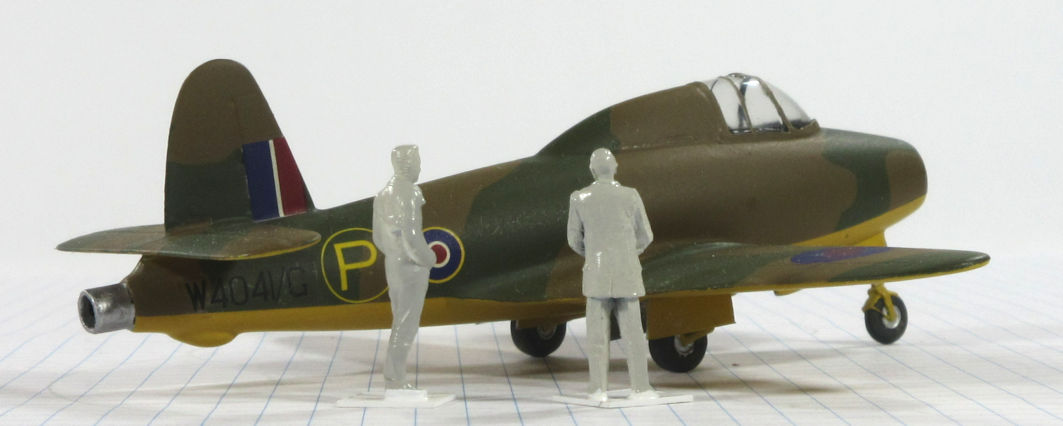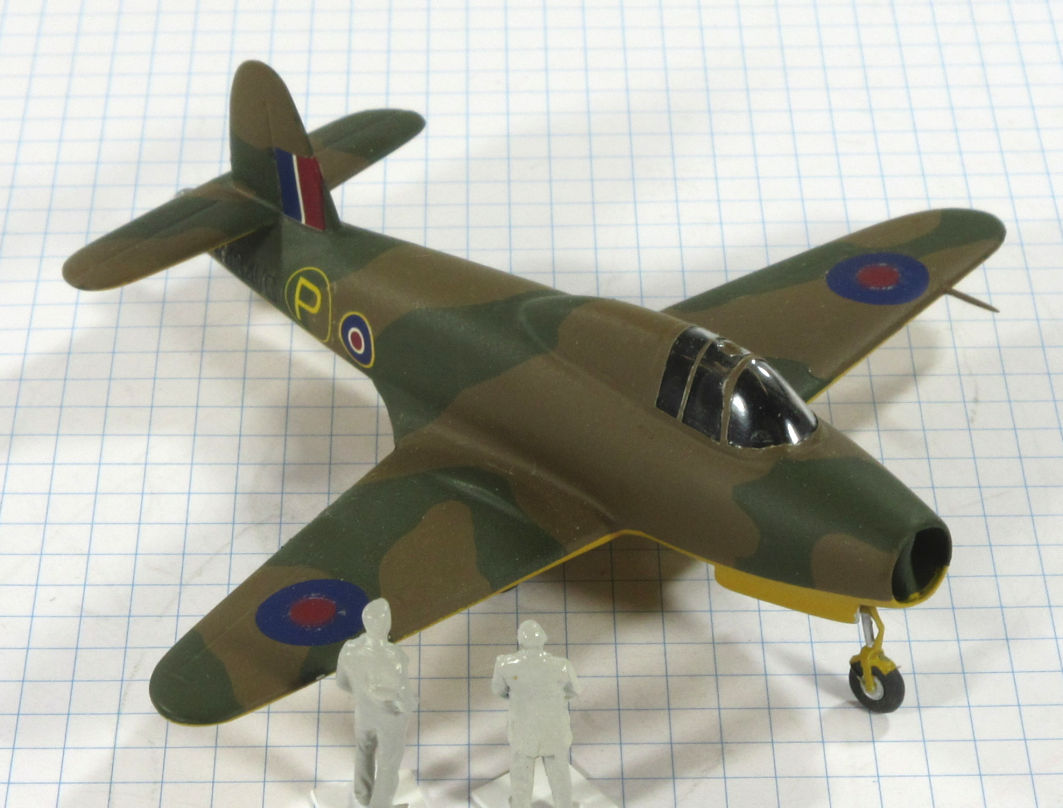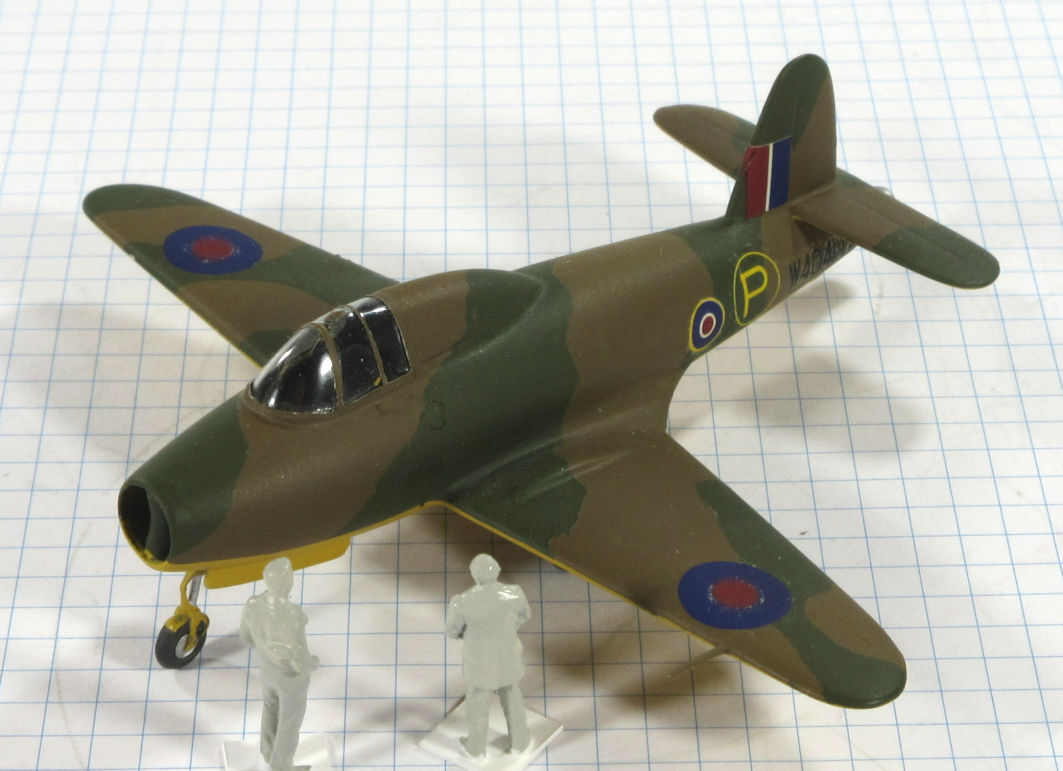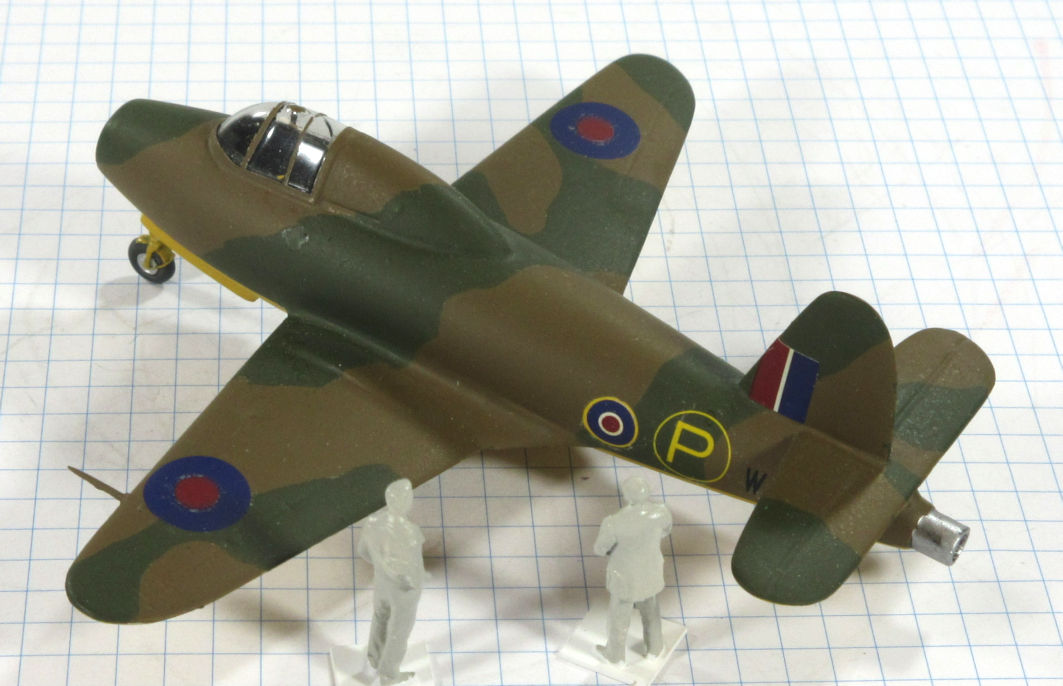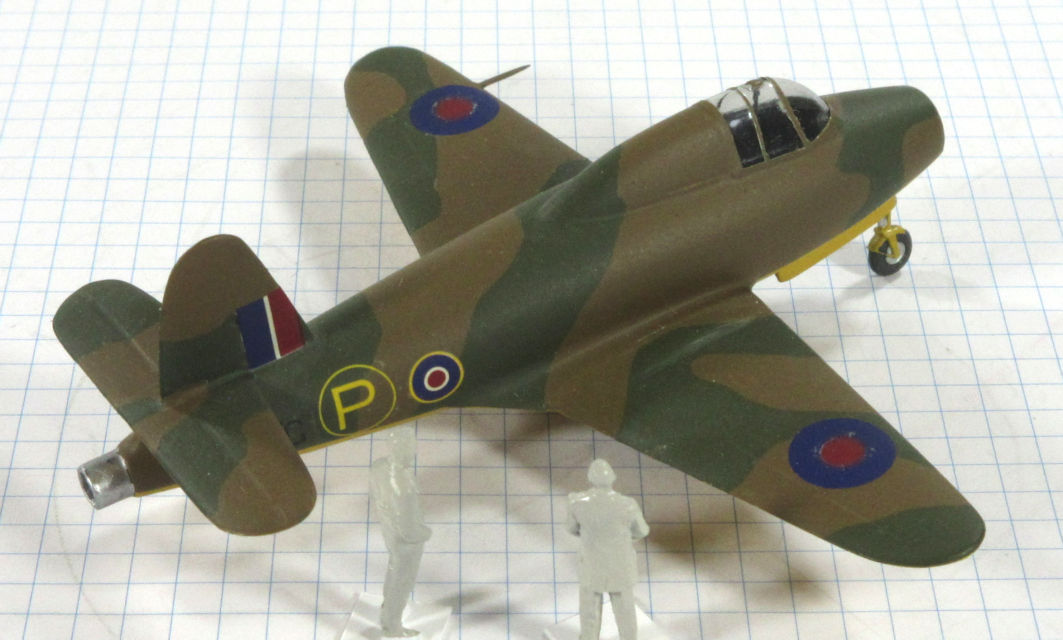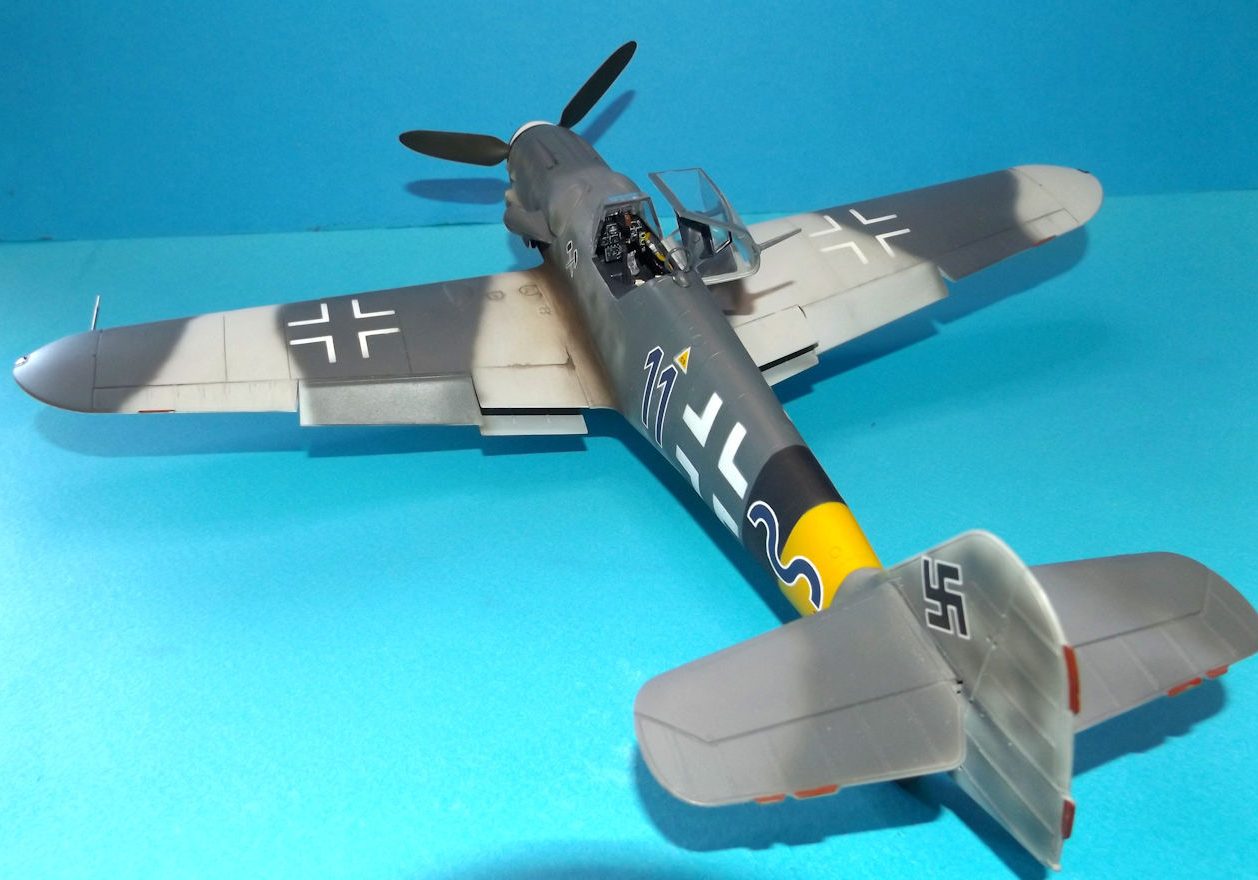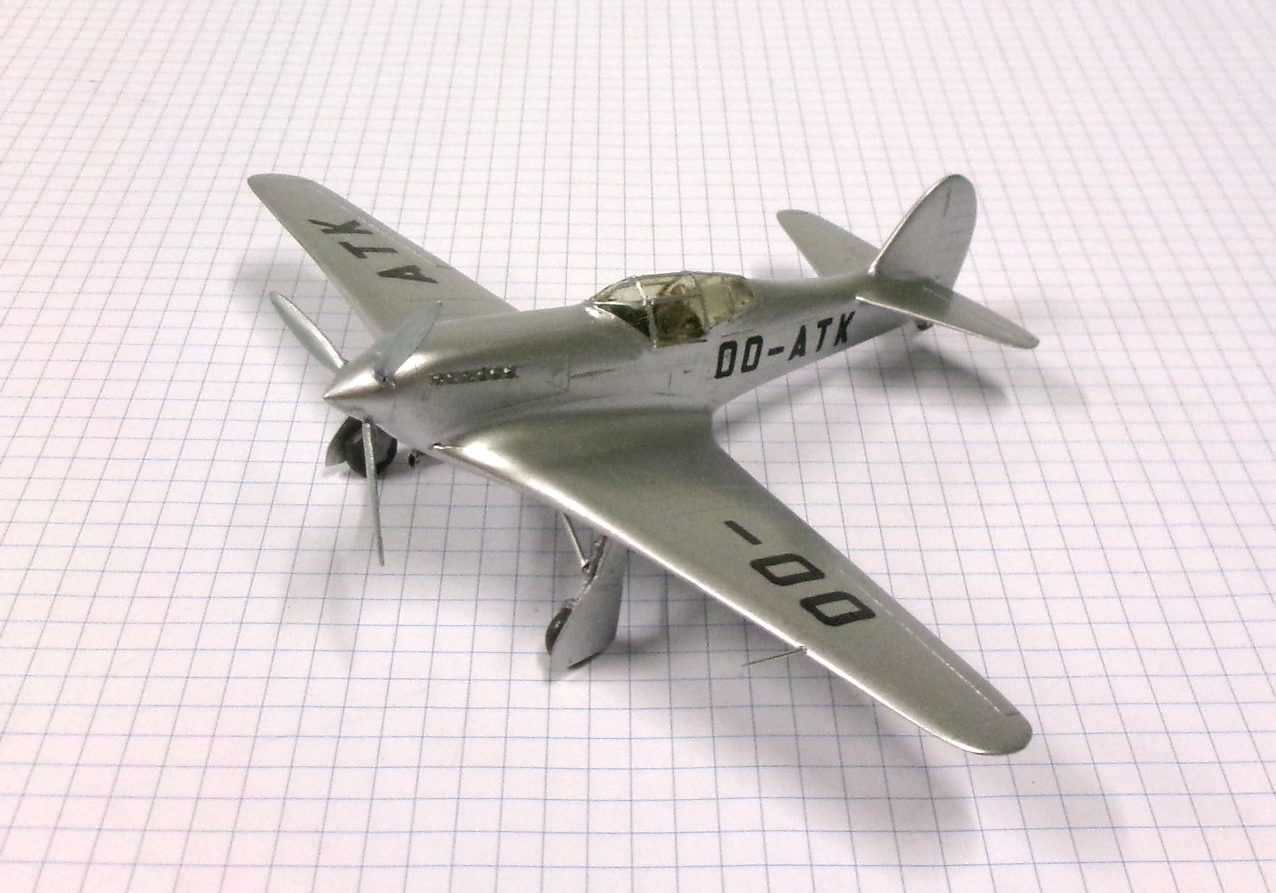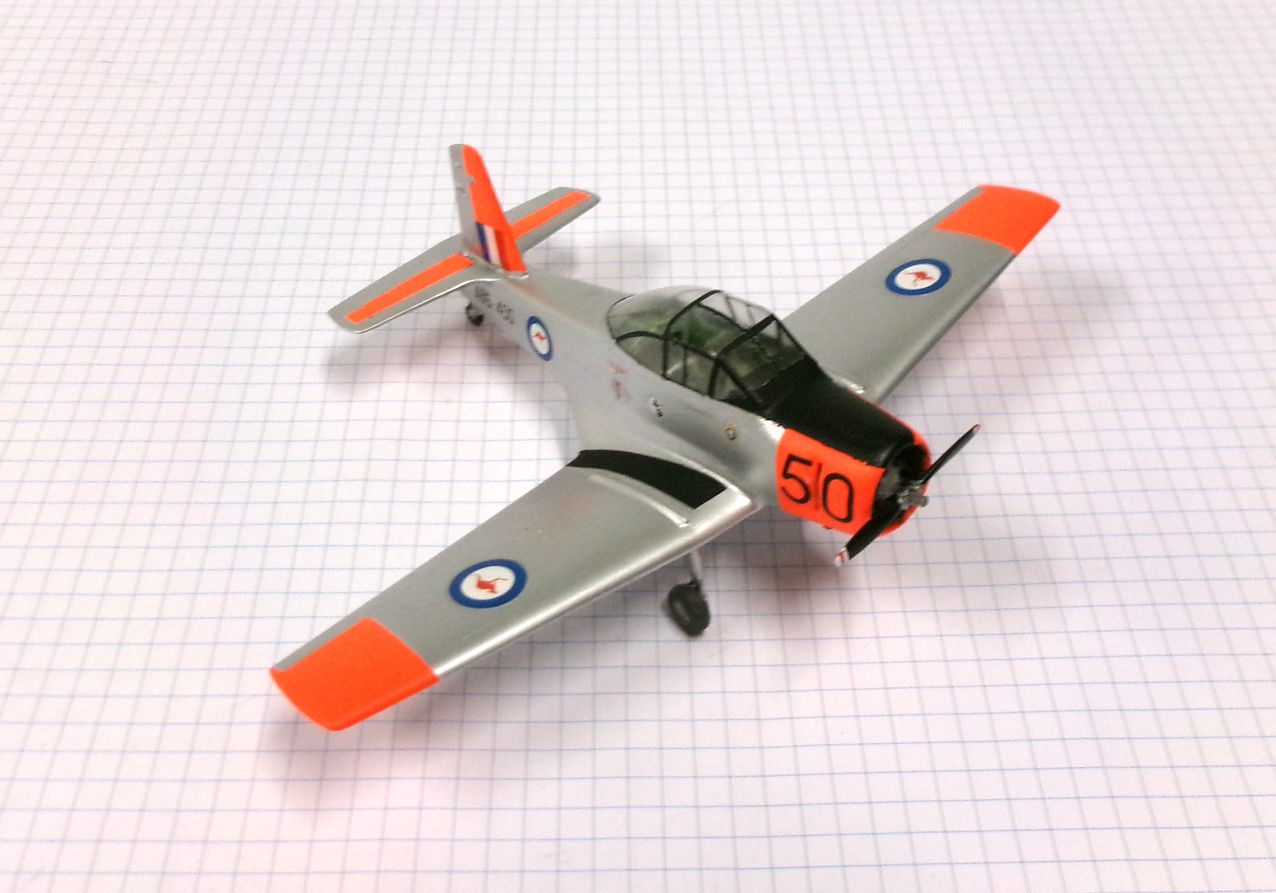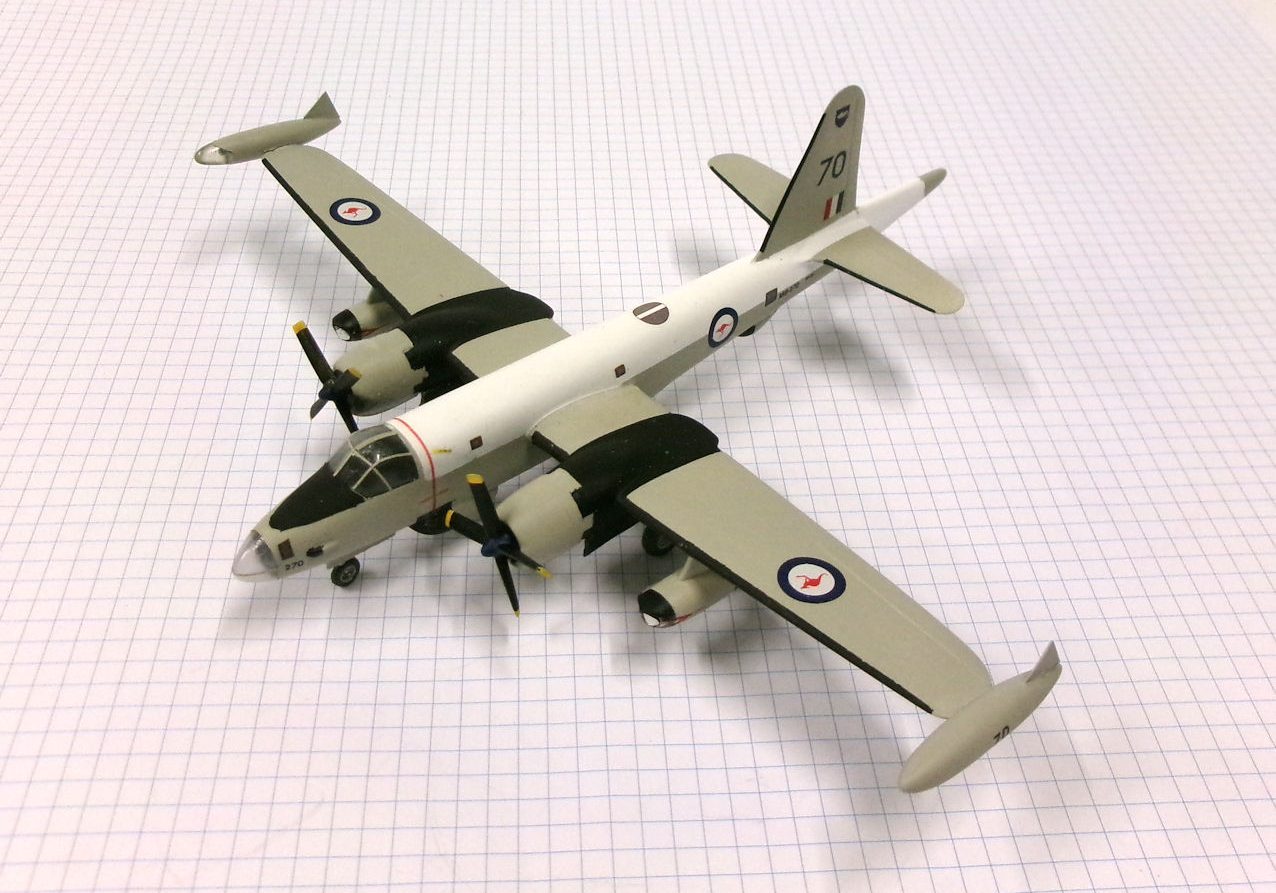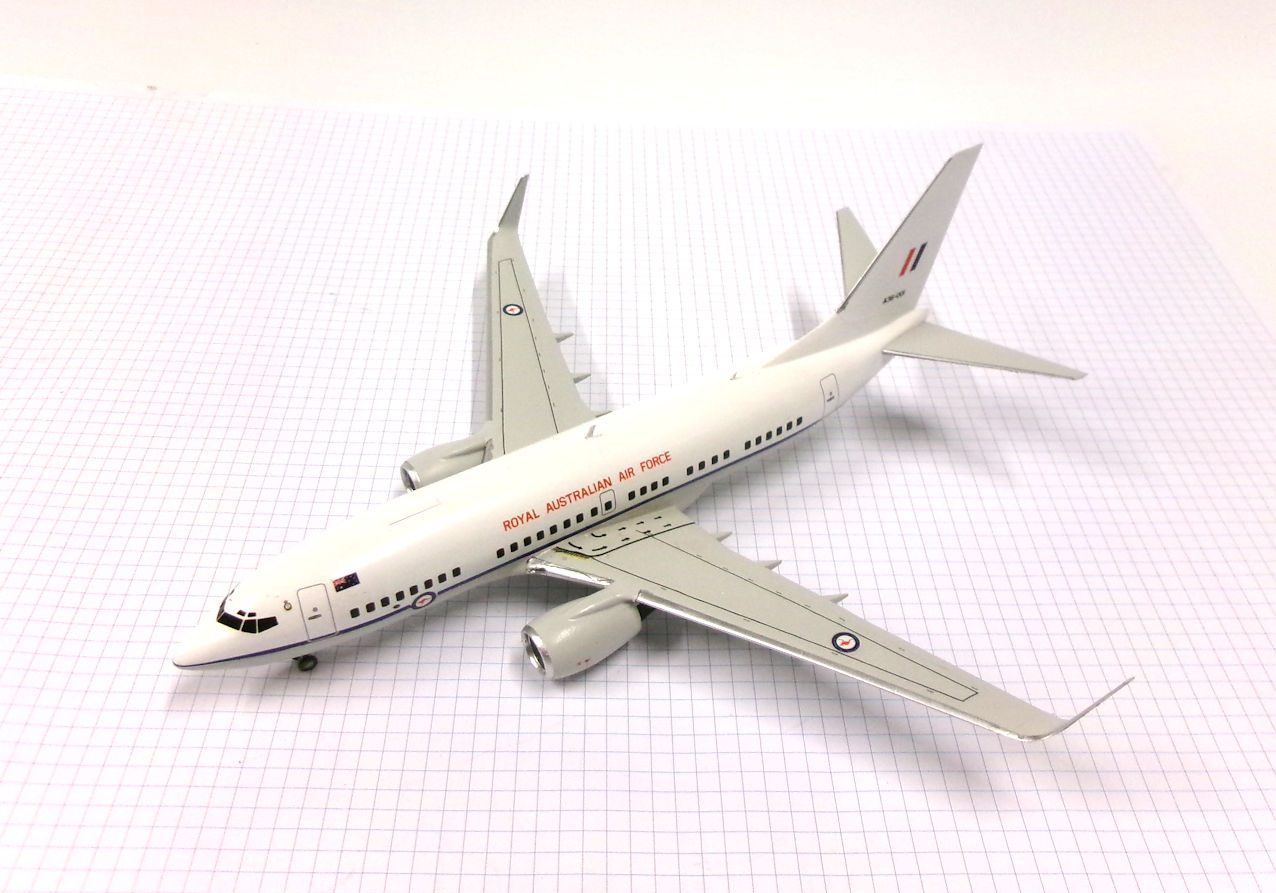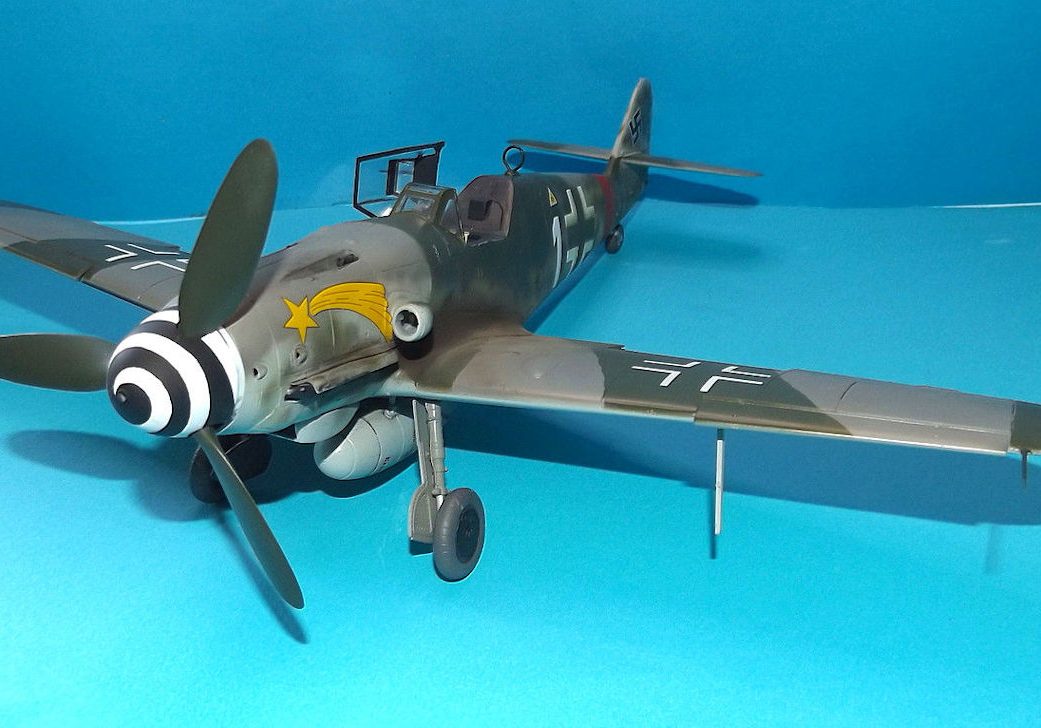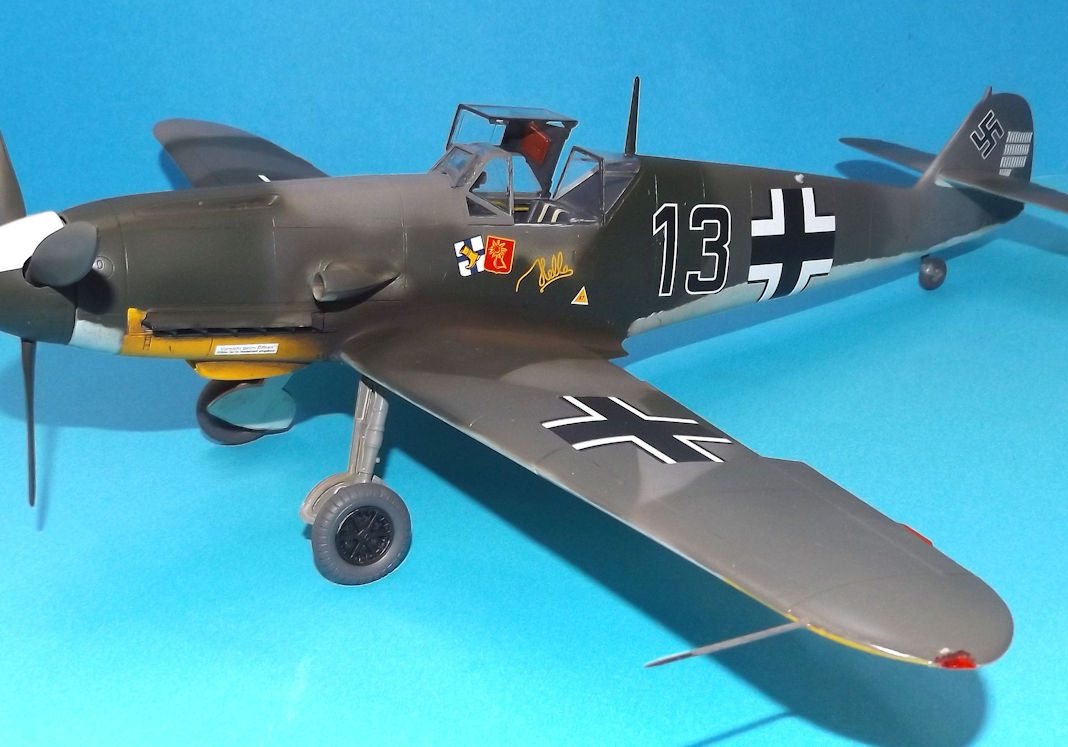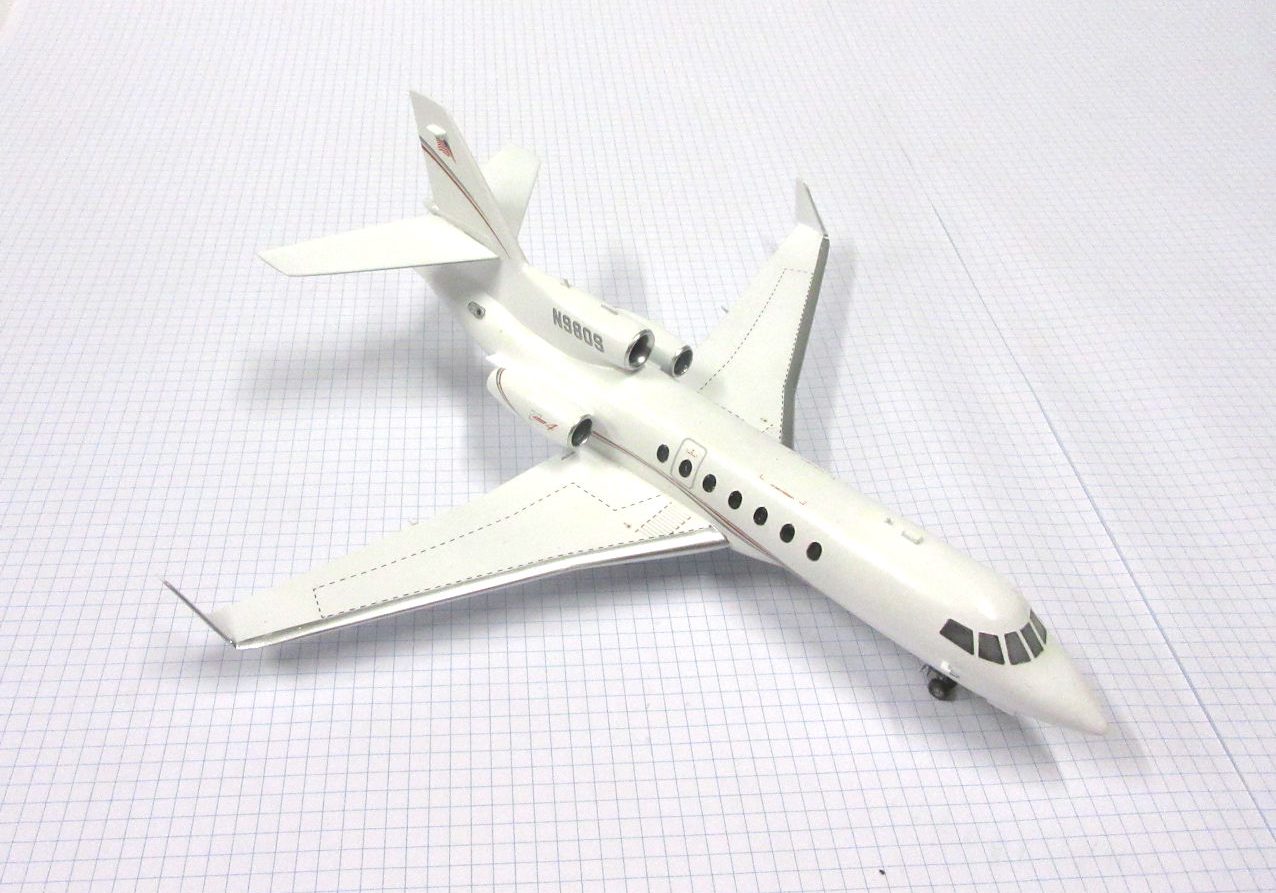History
The Gloster E.28/39 was a testbed aeroplane for Britain’s first jet engines. It flew successfully from May 1941 until 1945, making several hundred flights and making an important contribution to jet engine development.
Frank Whittle patented his gas turbine engine design in 1930 but nobody showed much interest until 1936 when a company was founded to develop jet engines in Britain.
Gloster was given the contract to make the testbed aeroplane for the new engine, work started early in 1940, trails began on 7 April 1941 and the first flight was made on 15 May 1941.
A second prototype started flying early in 1943 but crashed in July that year.
The first prototype continued flying until 1945, making several hundred flights in all and making an important contribution to early jet powered aviation.
In April 1946 it was presented to the Science Museum in Kensington where it can still be seen today.
This model represents the first prototype.
High Planes 1/72 kit completed by Leigh Edmonds in November 2000.
